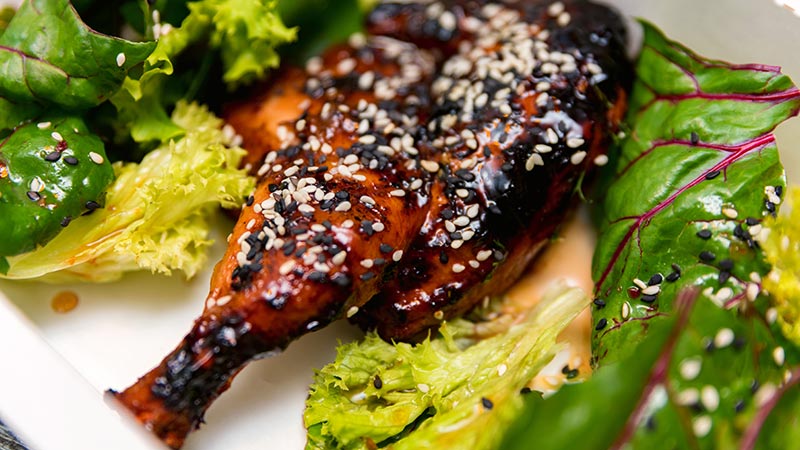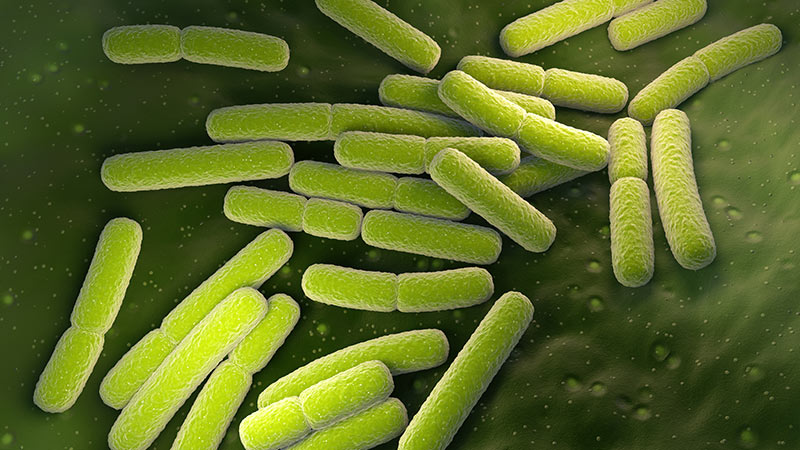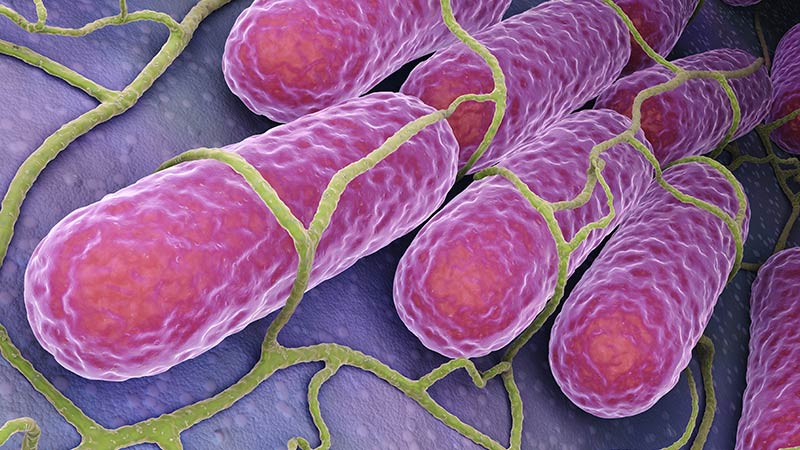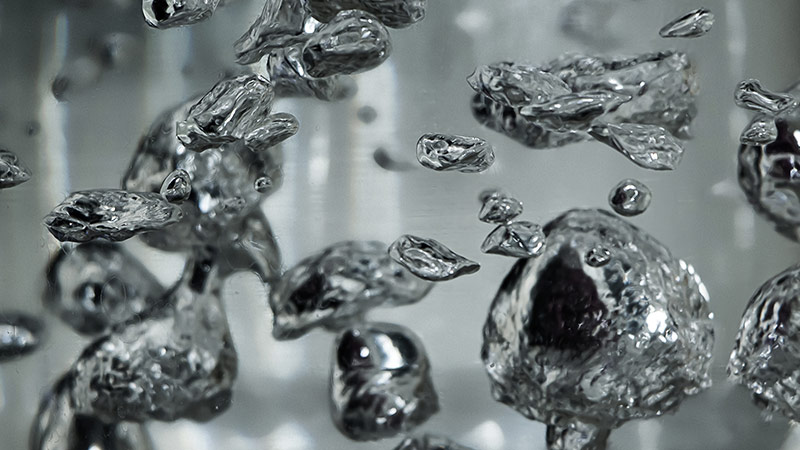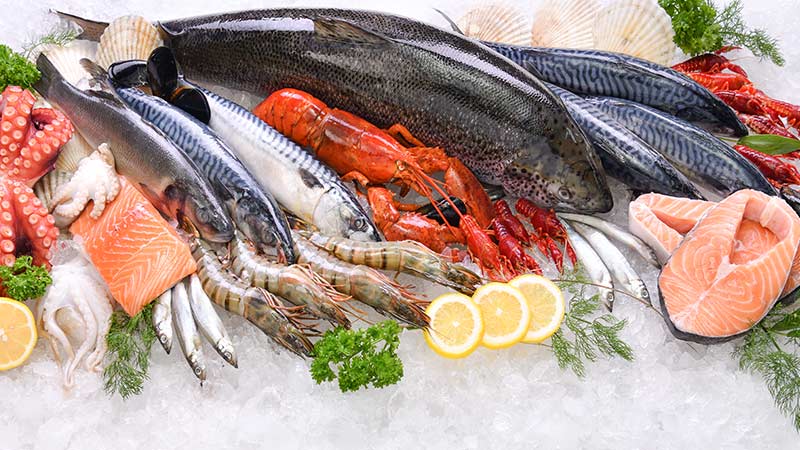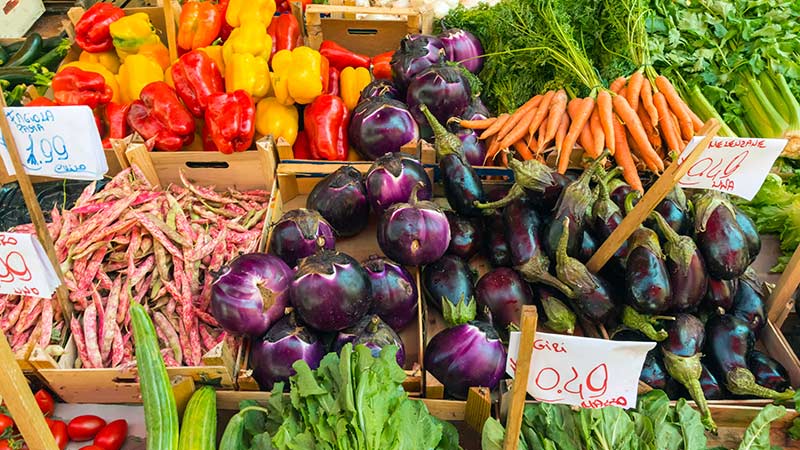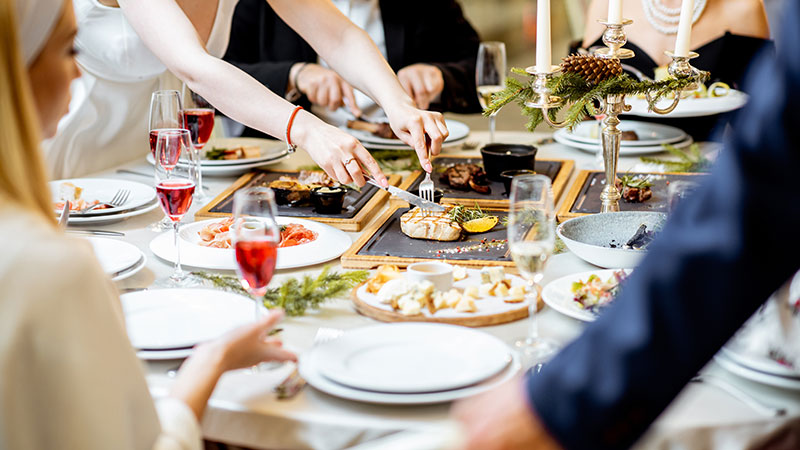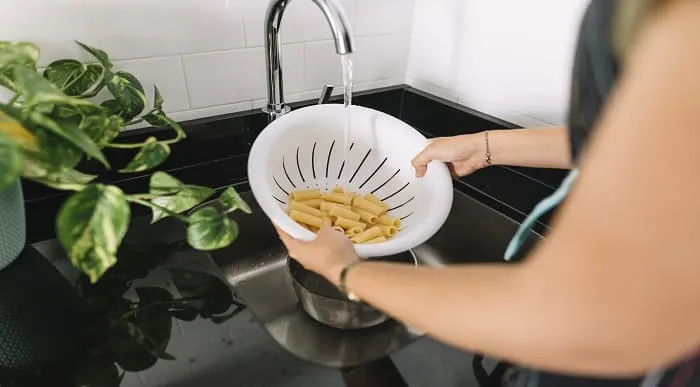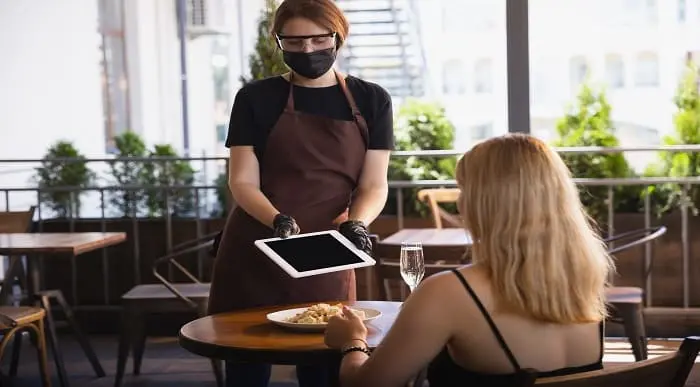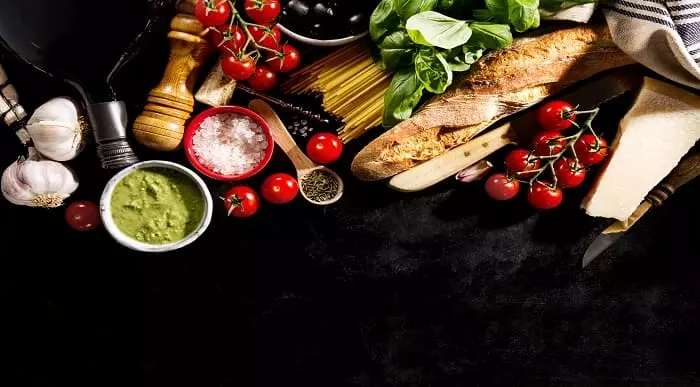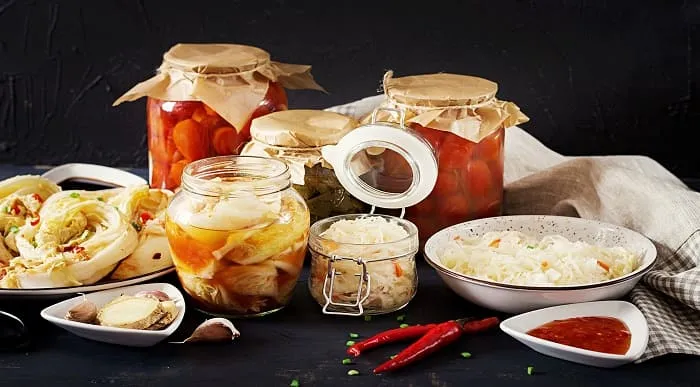Food Hygiene & Safety
What are High Risk Foods – Top 20 High Risk Foods
Fighting bacterial parasites is an ongoing task for every food you create and serve. We should look at kitchen cleanliness as an established standard that must be followed at all times, not only once in a while to check a box. You can avoid the spread of hazardous microorganisms with good hygiene practices and a dash of common sense. But how can you maintain these things? The first question that comes up as relevant is, what are high risk foods?
Foods that are high-risk are more likely to contain harmful bacteria and other disease-causing germs than low-risk foods.
It’s an essential topic in good hygiene practice, and this is what we are going to talk about today. We’re also going to discuss common food safety issues and causes of food poisoning.
So, let’s start.
Table of Content
- What are High-Risk Foods?
- What Makes Food Go Bad?
- Other Causes
- Top 20 High-Risk Food Examples
- How Can You Avoid High-Risk Foods?
- Conclusion
- FAQs
- Is Ham a high risk food?
- Are pickled onions high risk food?
- Is rice a high risk food?
- Is dry rice a high risk food?
- Is a chicken sandwich a high risk food?
- Is flour a high risk food?
- Is beer a high risk food?
- Is tuna a high risk food?
- Why is chicken a high risk food?
- Is tofu a high risk food?
- Are high risk foods low in protein?
- Is jam a low-risk food?
- Is cooked rice a high risk food?
- What are the 3 types of food contamination?
- What to Read Next:
What are High-Risk Foods?
Any food that has the potential to do harm if you consume it is risky food. It’s not that they are dangerous or at a higher risk, but they have a tendency to spoil or become harmful if they are not, for example, cooked or stored properly. Foods that support the growth of bacteria and create ideal circumstances for them are more likely to harbour deadly bacteria and other disease-causing organisms such as viruses and parasites. They are also often known as potentially hazardous foods.
Inappropriate storage conditions or wrong cooking methods are common causes of spoilage in high-risk foods. Meats, fish, seafood, dairy products, gravy, sauces, pasta, and even cooked rice are just a few examples of high risk foods that might be contaminated by minor mistakes. As a result, even slight mistakes in handling common products might negatively influence anyone.
 Do you want to do a Food Hygiene & Safety Course?
Do you want to do a Food Hygiene & Safety Course?
What Makes Food Go Bad?
There are a variety of reasons why our food may become unfit for consumption. First, bacteria growth may be one of the major ones among these. But there are, in fact, more.
Bacteria and Viruses in High Risk Foods
Bacteria growth is one of the major reasons behind food going bad. Many bacteria can cause food-borne diseases. Let’s discuss some of these in alphabetical order.
Bacillus Cereus
Bacillus cereus bacteria belong to the bacilli bacterial family. You’ll find them in a wide range of foods, proliferating rapidly at room temperature. So prepared dishes and leftovers are at risk of contamination by this bacteria.
Prepared rice dishes are often the classic victim of Bacillus cereus.
It can create toxins, which can lead to two forms of gastrointestinal problems: emetic (vomiting) and diarrhoeal syndromes.
Campylobacter
Campylobacter (meaning “curved bacteria”) is a genus of Gram-negative bacteria. In humans, it causes campylobacteriosis, a diarrhoeal disease.
Campylobacter bacteria are the most common cause of food poisoning in the United Kingdom, accounting for over 300,000 cases per year. Campylobacter is commonly associated with untreated water, unpasteurised milk, raw meat, and chicken; experts estimated that contaminated poultry is responsible for four out of every five instances of the sickness.
Clostridium Botulinum & Clostridium Perfringens
Botulism is a rare kind of food poisoning caused by a type of bacteria Clostridium botulinum. Sometimes it can be lethal. You’ll find the bacteria in soil, dust, and sediments in rivers or seas, and if they don’t get enough oxygen, they can generate toxins. Canned, bottled, and vacuum-packed goods are especially vulnerable to contamination as a result of this.
Clostridium perfringens pathogens are found in the intestines of many animals, and they can infect meat and root vegetables that have come into contact with contaminated soil or manure. These bacteria multiply quickly, especially on meat, poultry, or meat products that we sometimes cook slowly (such as casseroles) or that which we have stored at room temperature for a long time before serving.
Escherichia Coli
E. coli bacteria are found in the digestive tracts of animals and usually are not dangerous, but specific strains can cause food poisoning. These bacteria are extremely hardy. They can survive on work surfaces and equipment for up to 60 days. E. coli is ubiquitous in cattle. As a result, it frequently affects beef products and milk.
Listeria Monocytogenes
Listeriosis is a bacterial infection that develops after eating listeria-contaminated food. Because the bacteria are common in the environment, they can infect fruits and vegetables, as well as meat and dairy products from infected animals. Listeria can survive and proliferate at low temperatures, unlike other bacteria, and is therefore regularly discovered in chilled, ready-to-eat foods.
Norovirus
In the United Kingdom, Norovirus is the most prevalent stomach virus. It causes gastroenteritis in people. Norovirus is predicted to impact up to 1 million people each year, with the majority of cases occurring during the winter months.
This virus only affects people. Thus, consuming food contaminated by an infected individual, consuming raw shellfish collected from polluted seas or touching infected surfaces or objects and then touching your mouth or eating will make you infected.
Besides, you can check out our blog, “Food Hygiene Rating Scheme – Top 10 Tips to Get It [2023]”
Salmonella
Salmonella enterica and Salmonella bongori are the two types of Salmonella. S.enterica is classified into six subspecies with over 2,600 serotypes. The bacterium can easily contaminate meat products, poultry, eggs, and milk, as well as fruits and vegetables that have come into touch with animal dung. Some pets also carry salmonella bacteria.
Salmonella typhi, a bacteria that is related to salmonella, causes typhoid disease. Infected people’s faeces contain the germs, which can contaminate surfaces, food, and water.
Shigella
Shigella bacteria can contaminate foods washed in contaminated water, causing diseases such as bacillary dysentery and shigellosis. Humans are the most common source of dysentery. Raw fruits and vegetables, as well as seafood, are frequently contaminated with Shigella bacteria found in water sources.
Staphylococcus Aureus
Staphylococcus aureus causes staphylococcal infections. It is sometimes known as “staph infections” are caused by bacteria that live on human skin. The bacteria are typically innocuous, but if they enter the body through a breach in the skin, such as a cut, graze, insect bite, or injection, they can cause respiratory infections such as sinusitis and food poisoning.
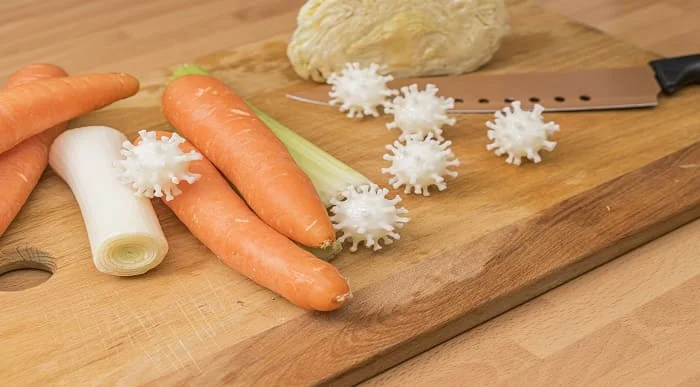
Food Hygiene & Safety Course at QLS Level 2
Other Causes
Parasites
In addition to bacteria and viruses, parasites can also cause foodborne illnesses. Examples are:
- Cyclospora cayetanensis
- Cryptosporidium parvum
- Giardia duodenalis
- Toxoplasma gondii
- Trichinella spiralis
- Taenia saginata (beef tapeworm)
- Taenia solium (pork tapeworm)
Toxic Chemicals and Metals
Some chemicals and metals, especially toxic heavy metals, can also get into food and make it dangerous. Examples are:
- Cadmium
- Lead
- Mercury
- Polychlorinated Biphenyl (PCB)
Learn about the most common types of food contamination, including physical contamination of food, its effects and the ways to prevent physical contamination of food from our blog, “What is the most common type of food contamination.”
Top 20 High-Risk Food Examples
The food items that are high-risk are as follows. Note that the list is not limited to the one given here. But these are the most common. So, these are:
Meat
Any cooked meat or poultry is high-risk food. To avoid cross contamination, it’s crucial to tell food handlers to handle and keep high-risk items separately from raw foods. Also, wash your hands before moving onto one food item to another. They also need to be cooked properly before they become safe for consumption. Chicken, for example, needs to be taken up to 165°F of internal temperature to get rid of salmonella and other such germs
1. Beef or lamb also need to be taken up to 160°F of internal temperature for them to become safe to eat.
2. Steaks, however, can be cooked at 145°F of internal temperature as germs cannot really penetrate the flesh unless we ground them. In that case, germs can invade the inner flesh and thus need to be cooked at 160°F of internal temperature.
Cooked meat products are also considered high-risk. These include:
3. Meat pies and pasties
4. Meat stock and gravy
5. Pate
Eggs
6. All eggs and egg-derived dishes such as frittata, quiche are high-risk foods — especially those produced with raw eggs, such as mousse and mayonnaise.
Seafood
7. Seafood such as shrimp, prawns, lobster, crab, and scallops need to be cooked until the flesh is opaque and glossy white.
8. But, in the case of clams, oysters, and mussels, you need to cook them until the shells open during the cooking process.
9. Sea dwelling fish that have fins like tuna need to be cooked at 145°F of internal temperature or until meat is opaque and easily separated with a fork.
10. Undercooked seafood dishes like sashimi, sushi, or ceviche are also on the high-risk food list.
Smoked Salmon
- The cooking process for smoked salmon is the same as that of sea-dwelling fish.
Dairy
Dairy products that are in high-risk food list are:
- Unpasteurised (raw) milk
- Ripened soft cheeses like blue (blue-veined) cheese
- Cream
- Ice-cream
Salads and Vegetables
High-risk foods also include fresh vegetables that haven’t been washed, including:
- Lettuce, salads like coleslaw or prepared fruit salads
- Raw sprouts like beans
Starchy Food Items
Farinaceous dishes are also high risk foods. These include:
- Cooked rice
- Pasta
- Cooked potato
Just as a heads up, let’s give you a brief list of low-risk foods so you’ll be aware of what this term means. A dozen examples of low risk foods are:
- Canned fish and seafood
- Salted dried meats
- Pasteurised milk and eggs
- Washed fresh vegetables, including salads and cooked vegetables
- Pickled foods
- Hard and processed cheeses
- Yoghurt
- Soft cheeses that are made from pasteurised milk
- Bread, flour and foods made from these that also contain little to no moisture, such as biscuits
- Fermented products such as salami, pepperoni
- Sugar and foods that are high in sugar, such as jam and chocolate
- Spices
How Can You Avoid High-Risk Foods?
Follow these steps so you can avoid being harmed by any foodborne illness. To be sure you’re keeping food and beverages properly and utilising them within specified storage guidelines, use the Cold Storage Chart and download the FoodKeeper app.
Kitchen Routine
1. Keep raw meats and poultry away from other foods during storage and preparation.
2. Separate raw and cooked foods.
3. Keep separate cutting boards for raw meats and vegetables.
4. High risk perishable foods should be labelled with colour coded papers.
5. After making and dishes with raw food, clean and disinfect the equipment and surfaces.
6. Always keep foods covered.
7. Cook food thoroughly – cooking times and temperatures vary for different meat and poultry. If you’re unsure, search the term “how to kill bacteria in food” in Google.
8. Food should not be left at room temperature for longer than 1 hour.
9. If the food has been defrosted, do not refreeze it.
Here, you can check out our other blog, “Why is a well-designed kitchen important to food safety.”
Shopping Routine
1. Food that comes in damaged, bloated, corroded, or dented cans should not be purchased or used.
2. Choose fruits and veggies that haven’t been bruised.
3. Cracked or unrefrigerated eggs should not be purchased or used.
4. Buy or pick up frozen and refrigerated foods once you’re ready to leave the grocery shop.
5. Keep groceries refrigerated as soon as possible.
6. Before placing uncooked packaged meat, poultry, or shellfish in the shopping cart, place it in a plastic bag to prevent any liquid from dripping on and contaminating other foods.
Dining Routine
1. Always ask about raw or undercooked components in the dish, such as eggs, sprouts, meat, poultry, or shellfish. If that’s the case, go with something else.
2. Ask how the restaurant handles and cooks high-risk items. If the waiter or waitress cannot provide a response, request to talk with the chef to ensure that they cooked your food to a safe internal temperature.
3. If you have leftovers that you wish to bring back home, always remember to refrigerate them asap, ideally within one hour.
4. If you’re unsure, never take the risk and change your menu or go with another restaurant altogether. Food poisoning is not a light matter. If you have a member in your group whose immune system is weak, you’ll put them in great danger. It’s never worth the risk.
Routine for Leftovers
1. If the temperature is warm, that is an ideal temperature for germs to thrive. If the temperature is above 90°F, discard any food that you left at room temperature for more than 2 hours.
2. Place the meal in shallow containers and place them in the refrigerator or freezer to chill quickly.
3. Consume cooked leftovers within four days.
4. Reheat leftovers to a temperature of 165°F.
Top Courses of this Category
Conclusion
FAQs
Is Ham a high risk food?
Yes. You have to keep any food containing a lot of protein at a specific temperature and safe from contamination. Ham is such a food item.
Are pickled onions high risk food?
No. Foods stored in an acidic environment are generally safe from contamination as germs cannot thrive in such conditions. Pickled foods are high in acidity.
Is rice a high risk food?
Bacillus cereus makes rice a high-risk food. This bacterium’s spores can survive in uncooked rice and grow and replicate once we cook the rice. Start consuming rice soon after you prepare it, and refrigerate leftovers as soon as possible to limit your risk.
Is dry rice a high risk food?
No. Dry rice or any food made from dry rice like puffed rice has little to no moisture in them. Thus, we generally consider them low-risk food.
Is a chicken sandwich a high risk food?
Yes. Any food item that has cooked meat in them has the potential to spoil if stored improperly.
Is flour a high risk food?
No. Germs cannot live in flour.
Is beer a high risk food?
No. We use hops in traditional British beers not just for flavour, but also because hops contain an antimicrobial ingredient that preserves the beer and reduces the possibility of anything bad happening.
Is tuna a high risk food?
Yes. It’s a fish, and you have to store it as you would any other meat. Also, consuming too much raw tuna can lead to excessive mercury levels in the body, which can cause major health problems like brain and heart damage.
Why is chicken a high risk food?
You’ll frequently find Campylobacter germs, as well as Salmonella and Clostridium perfringens bacteria, in raw chicken. If you don’t respect the potential for danger here, you’ll get sick.
Is tofu a high risk food?
Yes. Tofu that has gone past its prime will deepen in colour to a tan or even brown hue. On the surface of the tofu, you may see indicators of decomposition, such as mould or discolouration. Furthermore, when tofu has gone bad, it frequently develops a sour or rotten odour, whereas fresh tofu has no odour at all.
Are high risk foods low in protein?
No. It’s the opposite. High risk foods tend to be high in protein.
Is jam a low-risk food?
Yes. Foods that are high in sugar like honey and jam are low risk foods.
Is cooked rice a high risk food?
Bacillus cereus spores frequently multiply in rice and other grains. Bacillus spores, like other spores, will survive the cooking process. If you don’t thoroughly cool the cooked rice, Bacillus spores can germinate, generating a toxin that might cause illness.
What are the 3 types of food contamination?
The majority of food safety concerns that cause food contamination are classified as biological, physical, or chemical contamination.
What to Read Next:
- Can You Reheat Salmon? The Science of Reheating Salmon Fish
- What does Soy Milk Taste Like – A Guide to Taste, Storage & Usage
- What Does Due Diligence Mean in Food Hygiene? Examples of Due Diligence
- How to Cook Frozen Chicken – Video Guide & Image Included
- How can Poor Food Hygiene Adversely Affect a Food Business? Details Guideline
- Can You Reheat Risotto? Safety and The Science of Reheating Risotto
- What is the Temperature Danger Zone for Food? Graphical Chart Included



